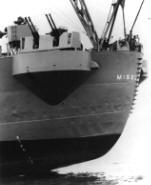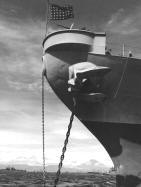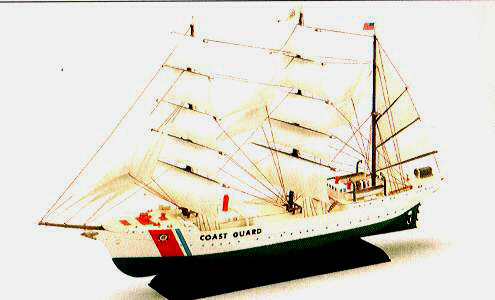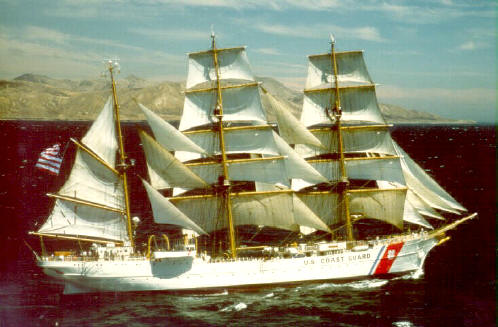|
Toll free 800 - 845-1140 |
|
Shipping
will be added to all orders, we always endeavor to give you the
best rate >>> Click for Rates. |
If you have any
questions or need help email us, call us or click here for HELP

U.S. Coast Guard Barque Eagle
(WIX-327)
Great kit to build. #CG007 - $Gone
This is a letter from a cadet
describing his time
on the Eagle while in the CG Academy!
The trip was 26,000 miles round trip from New London, Ct. to Australia and back .
It was divided into two 13,000 mile trips lasting 4 months each. Half of my
class sailed on phase 1 visiting ports such as Columbia, Ecuador, and Tahiti
before arriving in Australia. I was on phase 2 which flew to Australia and
replaced the initial crew allowing them to return to the Academy. Our voyage
took us to several Australian ports including Brisbane, Sydney and Manly. In
addition, we participated in the Tall Ships Race from Hobart, Tasmania to Sydney.
Although the race was never completed due to unfavorable winds, Eagle was in the
lead when she dropped out. Other highlights included a port call in Hawaii and
transit through the Panama Canal before returning to a nice welcome at the Coast
Guard Academy. The Eagle is a beautiful ship and the voyage was a memorable
one, but the aspect visitors don't see is what a work ship it is! Free time is at a
minimum for the Cadets on board. Our trip involved considerable
watch and navigational training as well as taking a full semester of academic classes on
board. It seemed that if we were not in the classroom, we were setting sails or standing a
midnight watch! Sleep was a luxury!
After 4 months most of us wanted to get off the ship and on dry land. Looking
back though, we all still talk about the great times we had and wish we could do it all
over again! Life on Eagle was hard, but the teamwork needed to make her sail
helped create many lasting friendships and gave us invaluable
leadership training as well as respect for the wind and seas.
My class was fortunate enough to sail to Norway and Scotland the following summer
also. Thanks for the interest.
The Ship in all it's Glory!
For more information on this kit click here.
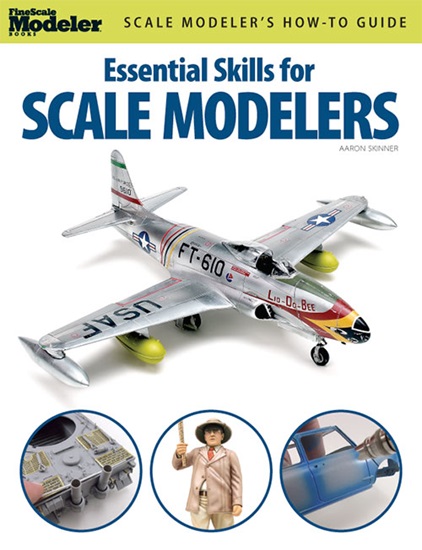 |
Essential Skills Scale Modeling
Were you a teenager the last time
you built a model?
A step-by-step introduction to scale
modeling basics.
Beginning scale modelers are full of questions:
What kinds of models are there? What kinds of tools
do I need? What glue works best?
How do I put a model together?
How are the decals applied?
Finally, Kalmbach offers answers to
all these beginner questions and more.
This new book is filled with more pictures
and how to articles than their other book.
List $21.95
Our Price BK01 19.95
|
The Eagle
Length: 295 feet
Maximum Speed: 11-16 knots (under full sail)
Maximum Range: 5450 miles
Training Complement: 12 Officers, 38 crew, 150 cadets (average)
Major Missions: Training vessel for CG Academy Cadets
The Eagle is a three-masted sailing Barque with 21,350 square feet of sail. It
is homeported at the CG Academy, New London, Connecticut. It is the only active
commissioned sailing vessel in the U.S. maritime services. (One of five such Training
Barques in world. Sister ships include: MIRCEA of Romania, SAGRES II of Portugal, GORCH
FOCK of Germany, and TOVARICH of Russia.)
The Eagle bears a name that goes back to the early history of the United States'
oldest contiunous seagoing service. The first Eagle was commissioned in 1792, just
two years after the formation of the Revenue Marine, the forerunner of today's Coast
Guard.
Today's Eagle, the seventh in a long line of proud cutters to bear the name, was
built in 1936 by the Blohm & Voss Shipyard, Hamburg, Germany, as a training vessel for
German Naval Cadets. It was commissioned Horst Wessel and following World War II
was taken as a war prize by the United States. On May 15, 1946, the barque was
commissioned into U.S. Coast Guard service as the Eagle and sailed from
Bremerhaven, Germany to New London, Connecticut.
Eagle serves as a seagoing classroom for approximiately 175 cadets and
instructors from the U.S. Coast Guard Academy. It is on the decks and rigging of the Eagle
that the young men and women of the Academy get their first taste of salt air and life
at sea. From this experience they develop a respect for the elements that will be with
them throughout their lifetime. They are tested and challenged, often to the limits of
their endurance. Working aloft they meet fear and learn to overcome it. The training
cadets receive under sail has proven to be an invaluable asset during their subsequent
Coast Guard careers.
On Eagle, cadets have a chance to practically apply the navigation, engineering
and other training they receive in classes at the Academy. As upper-class cadets, they
perform the leadership functions normally handled by junior officers. As under-class
cadets, they fill positions normally taken by the enlisted crew of the ship, including
helm watch at the huge brass and wood wheels used to steer the vessel.
Sailing in Eagle, cadets handle more than 20,000 square feet of sail and 5 miles
of rigging. Over 200 lines must be coordinated during a major ship maneuver, so cadets
must learn the name and function of each line.
The ship readily takes to the task for which it was designed. Eagle's hull is
built of steel, four-tenths of an inch thick. It has two full length steel decks with a
platform deck below and a raised forecastle and quarterdeck. The weatherdecks are
three-inch-thick teak over steel.
When at home, Eagle rests alongside a pier at the Coast Guard Academy on the
Thames River. The Academy was originally founded in 1876 with a class of nine students on
board the Revenue Cutter Dobbin. In 1932, a permanent Academy was built on land
donated by the New London community. Enrollment at the Academy numbers approximately 700
men and women, all of whom sail at one time or another on America's only active duty
square rigger.
Visit the Eagle's web site.
[USCG Home Page]
Updated: Jan 2000

